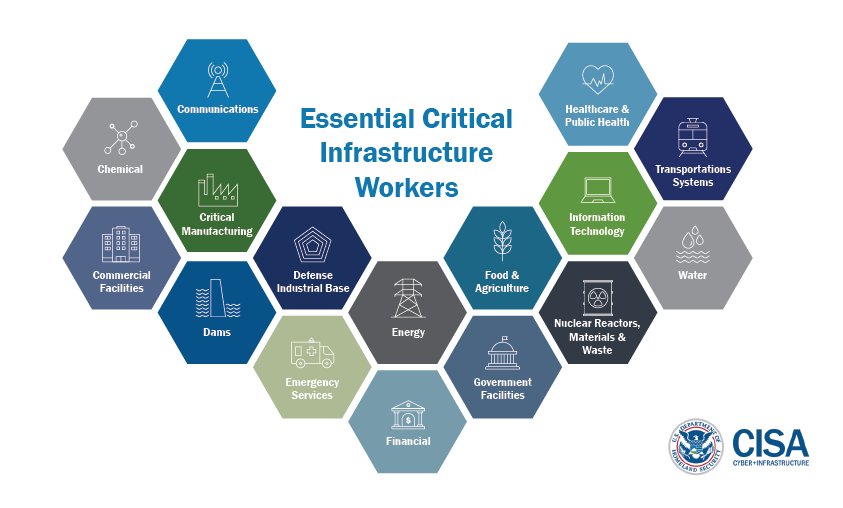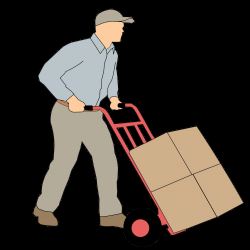As the search for a COVID-19 vaccine continues, we also continue to ponder who will be in the front of the queue. If we wish to restore our economy, we must undoubtedly consider vaccinating essential workers early on. But who exactly are they?
I've written in the late winter and early spring about what was deemed an essential service. Of course, the federal government also defined essential services workers, and as it turns out, that is most of us, 70+% of the workforce. Here is a picture of what industries are essential.

A research letter in JAMA looks a bit deeper into this population. They made use of an in-person survey of households conducted annually, the Medical Expenditure Panel Survey (MEPS) that has data of 100,000 households employment and medical conditions; they extrapolated those findings to the 248 million working-age individuals in the US. They meshed those numbers with another survey, the American Time Use Survey, to impute who might or might not work at home. And with the CDC's criteria for those at-risk for severe impacts from a COVID-19 infection. [1] As always, the numbers are not firm, but the numbers' relationships may be helpful.
- 40% of the total were not working at all
- 42% were essential, 27% of these essential workers could work at home
- 18% of the total were non-essential, 42% of these workers could work at home.
The researchers took a closer look at the essential workers unable to work at home and their households. Presumably, being out and about with co-workers or in roles involving meeting the general public puts you at greater risk of exposure to COVID-19. There is also evidence that household transmission is a powerful driving force – no social distancing, masks, and in many instances, as the weather gets colder, less fresh-air turnover.
- 85% of essential workers, unable to work at home, were at significant risk for severe cases of COVID-19
- There were more at-risk of exposure individuals when you took into account households – almost double. Again, 85% of those household members were at significant risk for severe cases of COVID-19
What have we learned?
50% of our adult population is at increased risk for a severe case of COVID-19 if they become infected. Many of our adult population are considered essential workers and are not able to shelter at home. If we are to return to our old economy, these workers and their families will need to be vaccinated. These essential workers can act as superspreaders in the community at large, but more importantly, in their households, and in turn, household members can share the virus with their friends and contacts. The take-home lesson is two-fold. Our society and economy are intimately integrated; most of us have essential roles. In protecting the essential, we must, at the same time, protect their families, not just from the viewpoint of social justice, but because it is the right move for the public's health.
[1] This included obesity, age 65 or greater, diabetes, COPD, renal disease, cancer, or coronary artery disease. Ethnicity was not considered.
Source: Risk of Severe COVID-19 Among Workers and Their Household Members JAMA Internal Medicine DOI: 10.1001/jameinternmed.20206249

